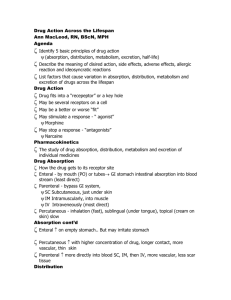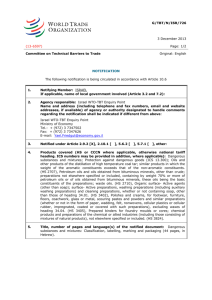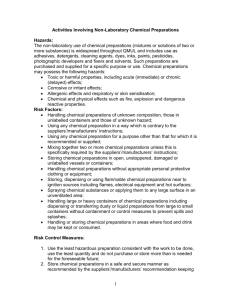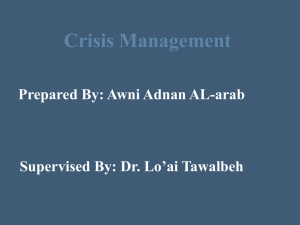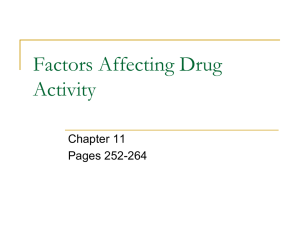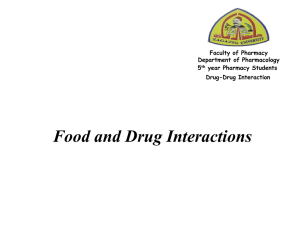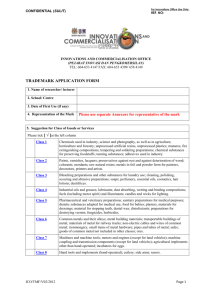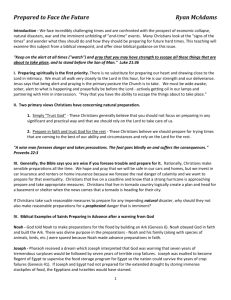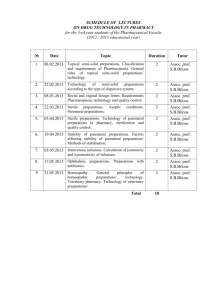Pharmacology Basics
advertisement
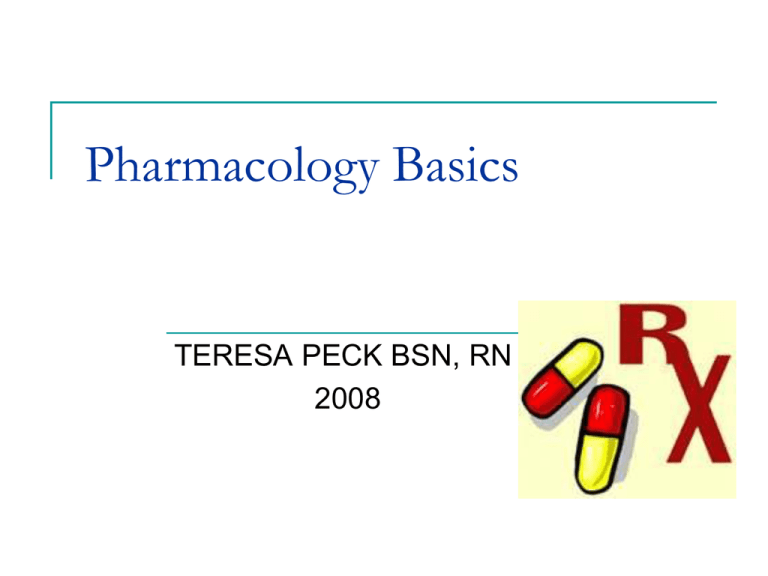
Pharmacology Basics TERESA PECK BSN, RN 2008 Drug Nomenclature Chemical-Scientific Name Generic name NOT CAPITALIZED Official Name Brand or Trade name Symbol R with a circle around it Name capitalized Drug Classifications Body system Therapeutic or clinical use Chemical action Prescription vs non-prescription Illegal or recreational Pregnancy Categories A-no risk B-minimal risk or no studies done C-risk identified D-well studied definite risk-benefit may out do risk X-positive evidence fetal anormalities-not used PRACTICE EXAMPLES Use your drug book Find 5 Medications Tell us the scientific, trade and generic names What are drugs made of? Minerals Plant Animal Synthesis Microorganisms Drug Preparations VEHICLES Solid Preparations Capsule Tablet Pill Lozenge Drug Preparations Solid Preparations Suppository Ointment Powder Tablets or pills may be “scored” Drug Preparations Fluid preparations Oral parenteral or injectable or IV Pharmacokinetics Absorption Distribution Metabolism Excretion Absorption-movement of a drug into the bloodstream. May be via several routes Oral-broken down in aqueous environment Enters GI tract, absorption continues Absorption may be further influenced by gut motility, prior surgery to the intestines, simultaneous intake of food, other drugs, and many other factors. Distribution Depends on tissue permeability Depends on tissue perfusion Depends on amount of blood flow pH can affect Excretion Relies mostly on KIDNEYS Also referred to as clearance Factors Influencing Drug Action Age Body Weight Metabolic Rate Illness Psychological Aspects Placebo effect Tolerance/Dependence Cumulative effect Drug Action Each drug has a DESIRED effect Can also cause undesirable effects-known as side effects LOOK IN DRUG BOOK- find desired action, list of side effects Adverse Reactions Allergic Reactions Hives Itching Eddema Anaphylactic reaction Respiratory distress Cardiovascular collapse Risks With Drugs Carcinogenicity Teratogen Drug Interactions Drugs can “mix” or interact with other things Drugs Foods Juices Drug Legislation Federal Food, Drug and Cosmetic Act 1938 Controlled Substances Act, 1970 Schedule I Schedule II Schedule III Schedule IV Schedule V Drug Development Preclinical research Clinical research and development New drug application review Postmarketing surveillance Common Abbreviations Daily BID=twice daily** PRN=as needed Ad lib=as much as needed Mg=milligram Ml=milliliter C=with Common Abbreviations Tid=three times a day** Stat=NOW NGT=via nasogastric tube Gr=grain Gtt=drops Od=right eye Os=left eye Ou=both eyes Pc=after eating Ac=before eating Q=every Qh=every hour Six Rights of Medication Administration Right Drug Right Time Right Dose Right Patient Right Route Right Documentation Nursing Process in Med Administration Assessment data collection Nursing diagnosis Planning Implementation Evaluation Drug Action Across the LifeSpan Absorption Distribution Metabolism Excretion Toxicity Pregnancy/Breast-feeding Patient Education and Medication Therapy Noncompliance We learn three basic ways Learning needs to be focused, repetitive Need to address all ways people learn Determine readiness to learn Determine barriers (age, cognition, hearing/vision impairments) SPACE OUT TEACHING
